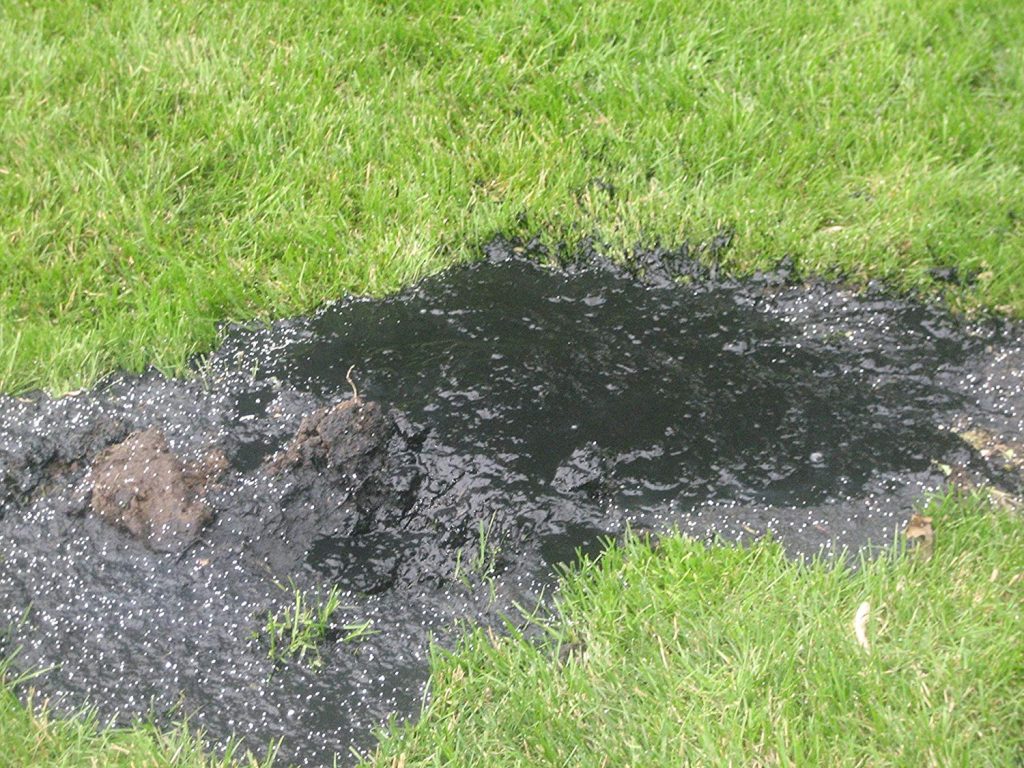
Solid waste generated by the home flows into the septic tank where, with the help of bacteria produced by the body, a process referred to as digestion takes place. The solid waste matter is broken down into a liquid effluent much like the way food is broken down in our stomach.
The septic system as we know it today has been digesting solid waste generated by homes for hundreds of years. The septic systems of long ago were typically designed the same way they are today.
With the introduction of antibacterial hand soap and toxic cleaning products, we have over time compromised the septic systems ability to digest solid waste into effluent. Solid undigested waste is forced out into the drain field where it will coagulate with fats, oils and greases forming a black tar like matter referred to as a bio-mat. The undigested bio-mat leaches into the ground clogging the 1b and 2b crushed gravel and stone that make up the leaching ability of the drain field.
Currently, bio-mat buildup can be remediated in two ways. The first method is to dig up the septic tank and drain field replacing the entire system. The cost of replacing a septic tank and drain field can range from $2,000 to $60,000 depending on what area of the country you live in.
The only other available option is to Super Shock the septic system with a high concentration of beneficial bacteria additive. The high levels of bacteria additive will assist the normal process of digesting the bio-mat trapped in the drain field creating the clogged trapping effluent in the drain field.
Drain field bio-mat can also contribute to backups in the home and wet spots over the drain field. Treating your septic system with a septic tank treatment in a bacterial bio pack form for can reduce the buildup of bio-mat in a septic system ensuring a reduction of unnecessary pump outs increasing the life expectancy of a septic system.
